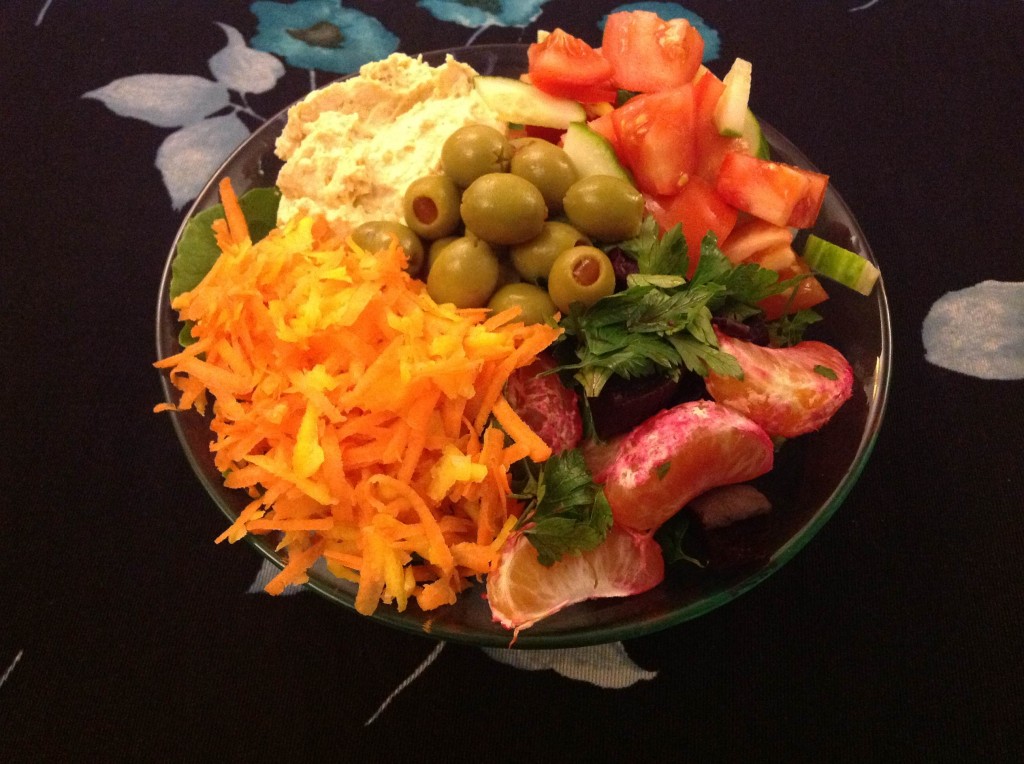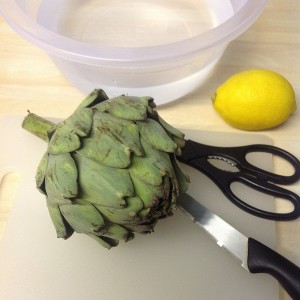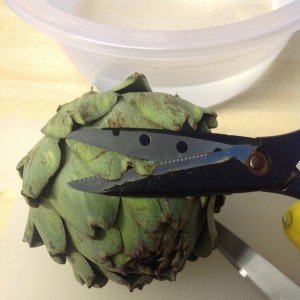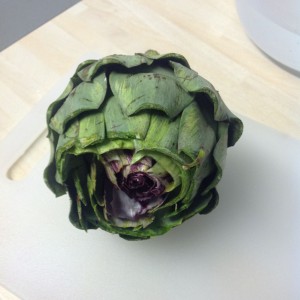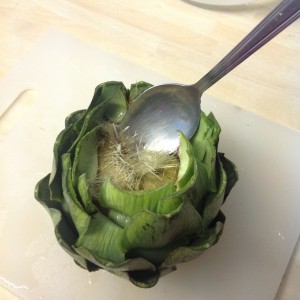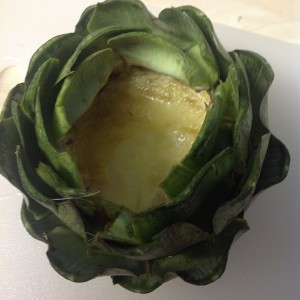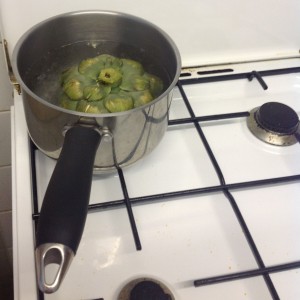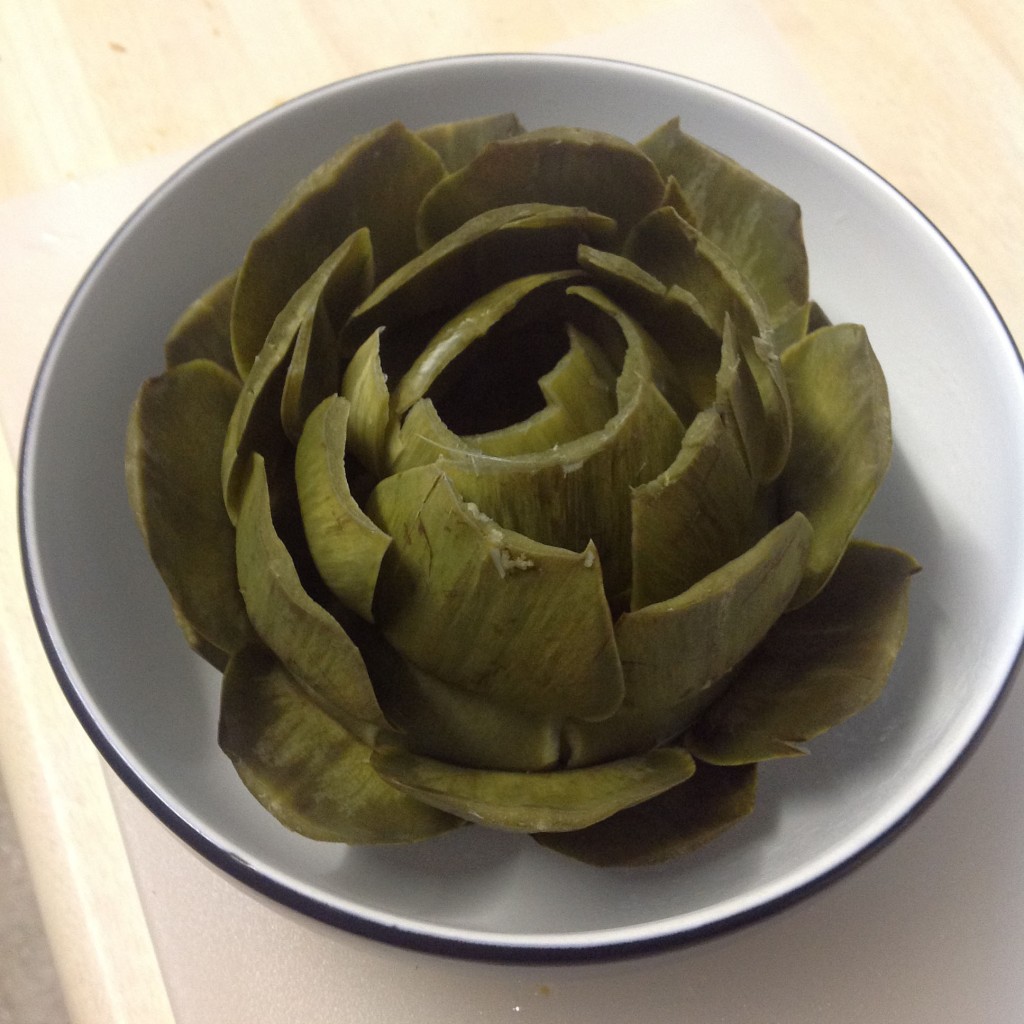We were having falafels last night, which are great but haven’t got the cheeriest of colours shining up from your plate to welcome you home from your working day. Having ‘just a bit of salad’ with them and sauces to go on them wouldn’t therefore do. When it’s raining outside you kinda want some zing and I don’t hold with putting things in pitta bread unless one is out and has no option but to eat while walking. I first decided I wanted to dish up 4 different things in one of those compartmentalised dishes, then I remembered we don’t own one so I worked out a way to get 4 things tidily into the same bowl. To recreate the culinary wonder you see before you, you have to *shock horror* not mind tinfoil briefly touching your food.
You will need:
- A bowl
- Pair of chopsticks
- Tinfoil, one side of which at least is spotlessly clean
- Something to scrunch up inside the tinfoil to make it take up more space
- 4 salads or other things to put in the bowl
- Place chopsticks across each other over the top of the bowl making 4 spaces
- Make 3 balls from tinfoil and whatever you’re putting inside (I used recycled kitchen roll) and place these in 3 of the spaces
- Starting with your most solid salad, place salads into the spaces, removing one tinfoil ball at a time
- You can add a sauce or something semi-liquid like houmous or a thick dip into the final space
- Remove the chopsticks and stick something pretty in the middle like parsley, olives or one of those tomatoes that has been carved to look like a… *fails to describe*
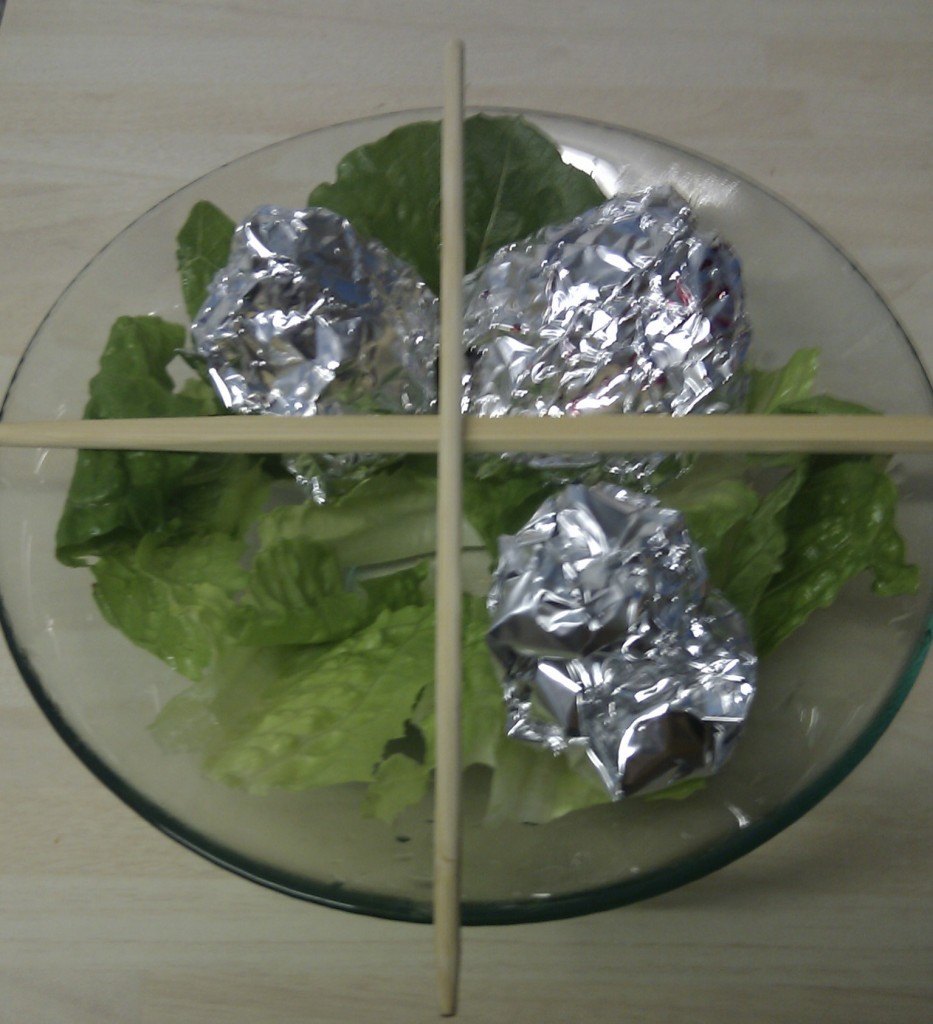 |
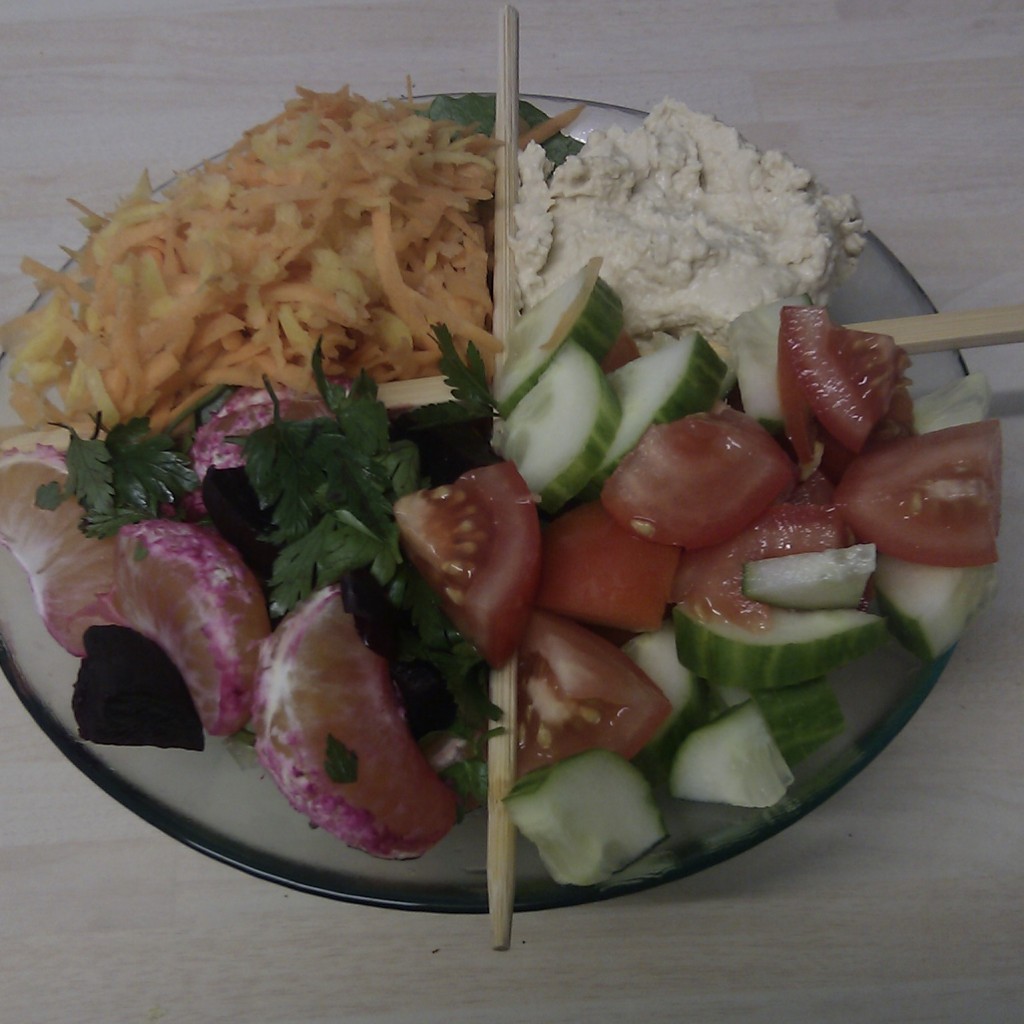 |
Looks a lot better when well-lit and photographed with a better camera.
Salads clockwise from bottom left: grated carrot (including the lesser-known yellow carrots, for in fact carrots do come in many colours – and look like they might just be fizzy), houmous (low fat varieties taste nicer = discovery of the month), tomatoes and cucumber, baked beetroot/beets with satsuma and flat leaf parsley. In the middle are some olives because I can’t carve tomatoes to look good and had already used parsley.
